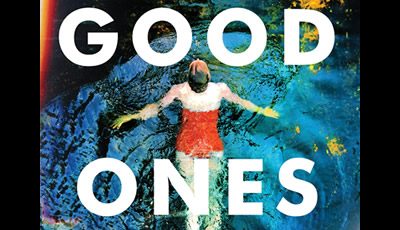

Latest Books G is for Grafton
G is for Grafton
In 2014, I sent a magazine editor a pitch for a story. I was living on the Central Coast of California, only an hour north of the home of one of my favorite writers, Sue Grafton. Grafton’s alphabet series, which began with A is for Alibi in 1982, was one of the first to include a woman detective as the protagonist, and while plenty had been written about her challenge to gender norms, I wanted to write about why she was a great writer, a master of the craft. The 23rd in the series, W is for Wasted, had recently been published, and it was the perfect time for a long-range look at Grafton’s career.
The editor expressed initial interest but didn’t respond to my follow-up. The following year, I moved back to the East Coast, and in 2018, Grafton died after publishing the 25th book in the series, Y is for Yesterday. She’d said from the first that the final novel would be titled Z is for Zero, but her husband reported that she hadn’t yet begun writing. Grafton’s daughter put out a statement stating that “as far as we in the family are concerned, the alphabet now ends at y.” The hashtag #thealphabetendsaty trended on Twitter, and Grafton’s fans tried to make their peace with the idea that the series would never have an ending.
Grafton may have received her share of eulogies, but if you Google lists of greatest mystery writers of the 20th century, you’ll find her on precious few of them. Rarely is her name coupled with Agatha Christie, Dorothy Sayers, Dashiell Hammett, or Grafton’s own hero, Ross Macdonald. Her Wikipedia entry describes her, modestly, as an American author of detective fiction. Five years after Grafton’s death, an overview of her career that gives full credit to her accomplishments is long overdue.
Grafton was born in 1940 in Louisville, Kentucky. By her own account, Grafton’s childhood was a desperately unhappy one. Her parents were alcoholics, and she said in interviews that “from the age of five onward, I was left to raise myself.” Early marriage allowed an escape from her parent’s home, and she had her children young, while also making her first attempt to establish herself as a novelist. Of her first seven novels, only two were published. One was optioned for film, and Grafton moved to California, where she would live for the rest of her life.
Kinsey Millhone, Grafton’s fictional creation, is born in 1950 in Santa Teresa, California. (Grafton took the pseudonym for Santa Barbara from Ross Macdonald’s Lew Archer series.) Orphaned at age five, Kinsey is raised in a trailer by her tough-talking Aunt Gin, who taught her to play cards, handle a firearm, and live an independent, if sometimes lonely, life. Given the shared hardship of their different childhoods, it’s not difficult to read Kinsey as Grafton’s doppelganger, and Grafton encouraged this interpretation, commenting in interviews that “I think of us [Kinsey and me] as one soul in two bodies and she got the good one.”
What a pleasure it must be for a writer to spend 36 years with the same character, especially one as likable as Kinsey. “It’s a great gimmick,” said Liberty Hardy of Book Riot, when I spoke to her about the alphabet series. “It’s like the burlesque dancers in Gypsy say, ‘You gotta get a gimmick if you want to get ahead.’”
Thriller writer Hank Ryan, a friend of Grafton’s, spoke about how Grafton was able to develop her main character: “I remember saying to her, ‘Did you know all about Kinsey when you started writing?’ And she said, ‘No, Kinsey reveals herself to me in every book.’ She had tapped into this magic that Kinsey was a real person to her and kept secrets from her.”
Writer and New York Times crime fiction critic Sarah Weinman put it this way: “Kinsey was an original—resolutely independent, vulnerable, methodical, but not a lone wolf. She had a community around her that loved her, so that made it easier for readers to love her too.”
When I first read Grafton’s work, I’d just had my first child and was in exactly the right frame of mind to escape into Kinsey’s orderly world. I devoured the first 22 novels in less than six months, then waited eagerly for the next. Ryan told me she had a similar experience of being immediately captivated by Grafton’s work: “I was just transported by it. The depth and the texture and the voice of the story were so incredible and unique, and I was completely drawn in.”
Grafton’s accomplishment isn’t confined to the appeal of evoking an earlier era. Nearly everyone I spoke to about the alphabet series commented on the boldness of starting a series with A is for Alibi.The writer Kellye Garrett, another Grafton fan, describes being hooked in by Grafton’s facility with plot: “[The ending] catches you off guard, but when you look back, she’s planted it so well that it makes sense. Those are the best twist endings, when you’re surprised but it doesn’t feel like it’s out of nowhere.”
Fans differ when it comes to highlights among the series. Weinman nominates Q is for Quarry, which was based on a real crime in Santa Barbara in the 60s that remains unsolved. She praises both its literary quality and its impact on readers: “Grafton had already begun to push the boundaries of what she thought she was capable of writing…but Q also has historical significance, spurring a fan of Grafton’s, a mystery writer and retiree named Margaret Press, to become an investigative genetic genealogist and co-founder of the DNA Doe Project.”
Hank Ryan’s favorite is W is for Wasted, where Kinsey seeks out the estranged relatives of a homeless alcoholic who died with her name on a piece of paper in his pocket, for its elegiac tone: “Anyone who comes to the winter of their career or life is going to reflect on where they’ve been, and W is for Wasted has a special place in my heart for that reason. I think a lot of Sue came through in that book.”
If I had to pick a favorite, I’d choose K is for Killer. The novel takes place almost entirely at night, as Kinsey investigates the murder of a sex worker. I recently read it for the third time during a stint of insomnia and was again amazed at how beautifully Grafton creates the sense of a world turned inside out.
I’m also a fan of the second-to-last novel in the series, X, which features Grafton’s first serial killer, a chillingly ordinary amateur photographer named Ned Lowe. I thought back to Ned recently when I read Danya Kukafka’s recent Notes on an Execution, another serial killer novel that spotlights the banality of these figures instead of fetishizing them.
When I first read the alphabet series, it occurred to me that maybe I too could write crime fiction. In graduate school, I’d absorbed the belief that mystery was one of the lesser genres—“wasteful to the time and degrading to the intellect,” as Edmund Wilson put it in his 1945 essay, “Who Cares Who Killed Roger Ackroyd?”
But what could be better than this, I thought, as I turned over the pages of C is for Corpse or I is for Innocent? I didn’t think I had the stamina for a series, nor did I have an idea as good as naming each book after a letter of the alphabet. But focusing on the causes and effects of crime—through the lens of a woman’s experience—was something I could do.
*
I still wonder if Grafton hinted at her plans for Z is for Zero to her husband or her publisher, but if she did, they’ll probably never talk about it. I’ve decided that’s fine with me. After rereading the entire series, this time with the knowledge that the alphabet would always end at Y, I realized that I liked it better this way for two reasons—because it allowed me to imagine my own end to Kinsey’s story, and because, paradoxically, it lets me feel that she’s still out there.
Many fans and critics have pointed out that time moves at a different rate in Kinsey’s world. A is for Alibi took place in 1982, Y is for Yesterday in 1988. (Would Z is for Zero have made it into the 90s?) The timeline of the series circumscribes my childhood from ages four to 10, and I find the world of Grafton’s creation off-putting at times, particularly in the earliest novels, where people of color are relegated to bit parts and sexual harassment in the workplace is taken as a matter of course.
On the other hand, it’s a world without some of our pervasive 21st century anxieties—without cell phones or widespread awareness of climate change—and sometimes I’d like to go back there, to jog the beach path of Kinsey’s Santa Teresa, where you may run across a seductive elderly grifter or a murderous home-health nurse, but you definitely won’t meet a tech-bro or a Proud Boy.
But Grafton’s accomplishment isn’t confined to the appeal of evoking an earlier era. Nearly everyone I spoke to about the alphabet series commented on the boldness of starting a series with A is for Alibi. How did she know that she could do it? Ryan says that Grafton cultivated this sense of confidence in her artistic gifts, knowing that she needed to believe in herself: “She used to tell a story about going to her agent at the beginning of her career and saying, ‘I want to be a New York Times bestseller.’ That was the confidence she had. When she started the series, she knew it was a good idea and everybody ought to get out of her way because she knew she could pull this off.”
If Grafton had the opportunity to write Z is for Zero, its publication would no doubt have spawned countless tributes, retrospectives, and think pieces on how the world has changed since Kinsey set off to find the killer of an arrogant lawyer in A is for Alibi. By contrast, the pieces in response to her death were regretful in tone, focusing largely on the work she hadn’t yet done.
Though it’s undeniable that Grafton would have finished the last book if she could, the series’ tantalizing non-conclusion is perhaps characteristic of her contribution to the genre. She set herself one of the most challenging tasks a writer possibly could, almost finished it, and then left her readers to make sense of things. Surely this feat deserves to be recognized as the monumental accomplishment it is. All hail the queen of modern detective fiction.
G is for Grafton.
Polly Stewart was born and raised in the Blue Ridge, where she still lives. Her short fiction has appeared in Best New American Voices and Best American Mystery Stories, and in Epoch, Alaska Quarterly Review, as well as other journals. She writes a new monthly interview column for Crime Reads called The Backlist, and her nonfiction has appeared in the New York Times and Poets & Writers, among other publications. Her debut thriller THE GOOD ONES (Harper) is out this June. For more on Polly, visit www.pollystewart.com.
- THE GOD IN THE SEA with Paul Kemprecos - April 4, 2024
- FOR WORSE with L. K. Bowen - April 4, 2024
- HIT AND RUN with Vincent Zandri - April 4, 2024


